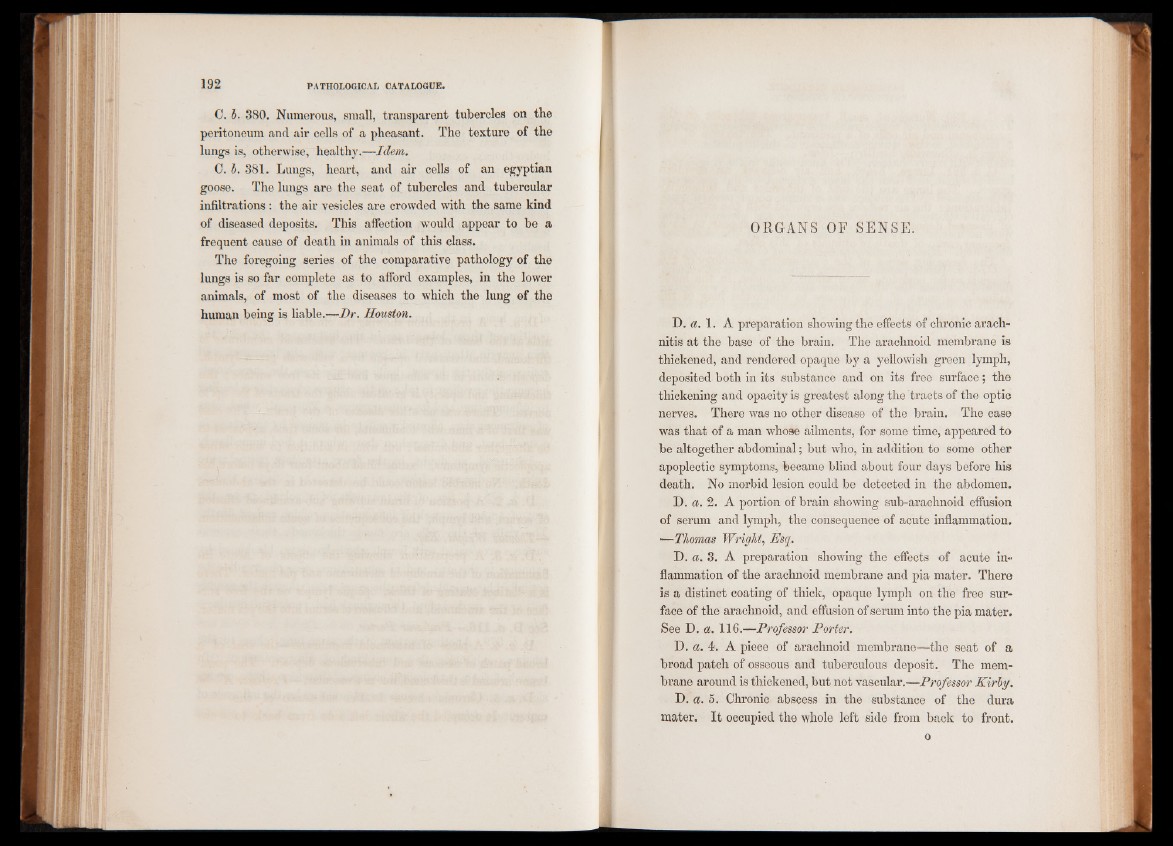
C. b. 380. Numerous, small, transparent tubercles on the
peritoneum and air cells of a pheasant. The texture of the
lungs is, otherwise, healthy.—Idem.
0. b. 381. Lungs, heart, and air cells of an egyptian
goose. The lungs are the seat of tubercles and tubercular
infiltrations: the air vesicles are crowded with the same kind
of diseased deposits. This affection would appear to be a
frequent cause of death in animals of this class.
The foregoing series of the comparative pathology of the
lungs is so far complete as to afford examples, in the lower
animals, of most of the diseases to which the lung of the
human being is liable.—Dr. Houston.
ORGANS OF SENSE.
D. a. 1. A preparation showing the effects of chronic arachnitis
at the base of the brain. The arachnoid membrane is
thickened, and rendered opaque by a yellowish green lymph,
deposited both in its substance and on its free surface; the
thickening and opacity is greatest along the tracts of the optic
nerves. There was no other disease of the brain. The case
was that of a man whose ailments, for some time, appeared to
be altogether abdominal; but who, in addition to some other
apoplectic symptoms, became blind about four days before his
death. No morbid lesion could be detected in the abdomen.
D. a. 2 . A portion of brain showing sub-arachnoid effusion
of serum and lymph, the consequence of acute inflammation.
—Thomas Wright, Esq.
D. a. 3. A preparation showing the effects of acute inflammation
of the arachnoid membrane and pia mater. There
is a distinct coating of thick, opaque lymph on the free surface
of the arachnoid, and effusion of serum into the pia mater.
See D. a. 116.—Professor Porter.
D. a. 4. A piece of arachnoid membrane—the seat of a
broad patch of osseous and tuberculous deposit. The membrane
around is thickened, but not vascular.—Professor Kirby.
D. a. 5. Chronic abscess in the substance of the dura
mater. It occupied the whole left side from back to front.
o